

Posted by AllDayShirts on to Printing Business Tips
T-shirts are possibly the most versatile pieces of clothing that you can have in your wardrobe. They're comfortable, fun, and can be worn by anyone, no matter their gender or age. In fact, when designed and worn in the right way, t-shirts can even be stylish and trendy.
For these reasons and many more, making custom t-shirts is a great way to help you personalize your look or promote your brand. If you're a budding designer or business owner, designing custom t-shirts will get your name out there for the world to see. Even if you're just doing it for fun, it can still help you create your own personal sense of style.
Creating your own custom t-shirt design can seem daunting. Many people have no idea how to design a t-shirt online or how to copyright a design for t-shirts. It's hard to know where to begin.
But don't worry! We've got you covered.
Here is a guide on how to design a t-shirt and create a product that sells!
There are all kinds of reasons why you might want to design a custom t-shirt. But since your end goal can have an effect on the product, it's important to zero in on your main reason for doing so.
Let's say you want to promote an event or raise awareness for a certain topic. Creating noticeable matching t-shirts for you and your team members and wearing them in public will draw people's attention. By making onlookers wonder what's going on, your coordinated t-shirts will raise awareness, just like you want them to.
Designing custom t-shirts for a group event like a family reunion or a class trip is also a good idea. It's a great way to make your event memorable, especially if you put in the time and effort to personalize each member's shirt. You can create lots of treasured memories this way.
It's also a strategic move to promote your business on a custom t-shirt. Free t-shirts are one of the best ways to get potential customers to remember you and to stay in their good graces. Not to mention that whenever they see the shirt, they'll remember your business, and whenever they wear it in public, you'll get free advertising.
A custom t-shirt is also a fantastic gift idea. Because it is so personalized, your t-shirt design might be just what your friend, family member, or significant other needs. Giving a custom-designed t-shirt as a gift shows how much you care, and it comes straight from the heart.
Now that you've figured out the why, it's time to move on to the what. Think about what you want to accomplish with your custom t-shirt, and try to reflect that in your design concept.
For example, if you're looking to promote something or raise awareness, you're likely going to want some bold, bright colors. You'll need something eye-catching that will stand out from the crowd.
If you're creating t-shirts to promote your business and hoping to give them out to lots of people, you'll want colors that complement multiple skin tones. You'll also want a simple and classic design that will be appealing to most people; nothing too loud or too busy.
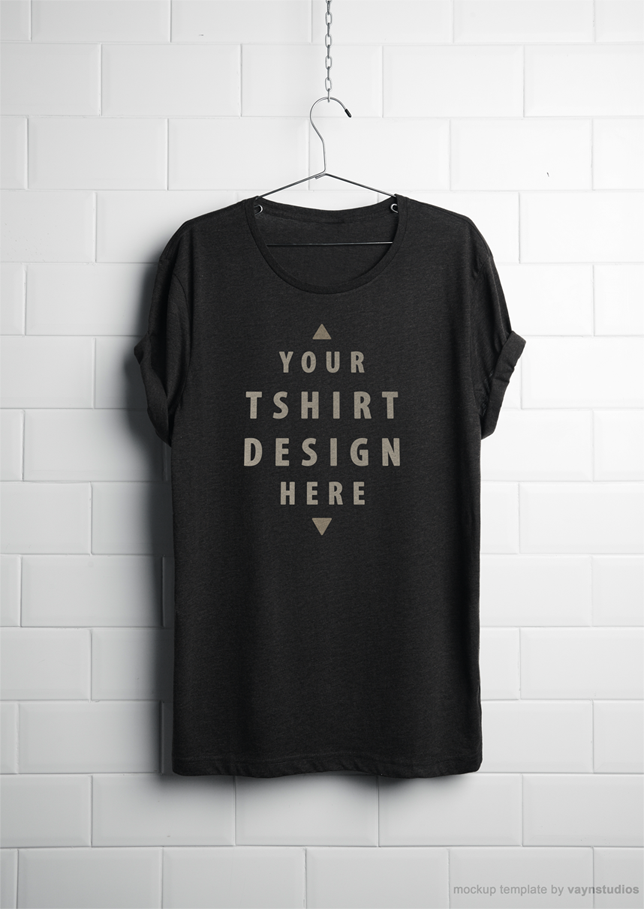
Via behance.com
Ideally, you want the most amount of people wearing your branded t-shirts, so make them want to wear your shirts.
It's a different ball game with t-shirts that are more personal, though. For something like a family reunion, you might want to print a cute or funny slogan, or maybe a family inside joke. If you're giving a gift, think about the favorite colors and topics of the person you have in mind, and use that as inspiration.
When it comes to fonts, the most important thing is readability. Stay away from fancy or curly fonts. Stick with ones that are easy to read, and consider looking into complementary fonts.
It's all coming together! This is where your t-shirt really starts taking form.
Some people might be daunted by creating their own mockup, but there are tons of graphic design programs that make it easy to design a t-shirt online. Take this step as an opportunity to fiddle around with the colors, fonts, and graphics in your design concept. See what works and what doesn't.
This is a chance to access your creativity. Don't forget that it all comes down to what you want to accomplish with your t-shirt. Keep your end goal in mind and tap into that.
Even if you're not a visual artist, there are lots of easy ways to learn how to make a t-shirt design. You can use ready-made templates to get you started, or you can create your own design from scratch. You can even collaborate with others online to make something outstanding and unique.
If you're intimidated by this, you can also find designers online who will work in collaboration with you to create a beautiful design. Their expertise will help you bring your creative vision to life!
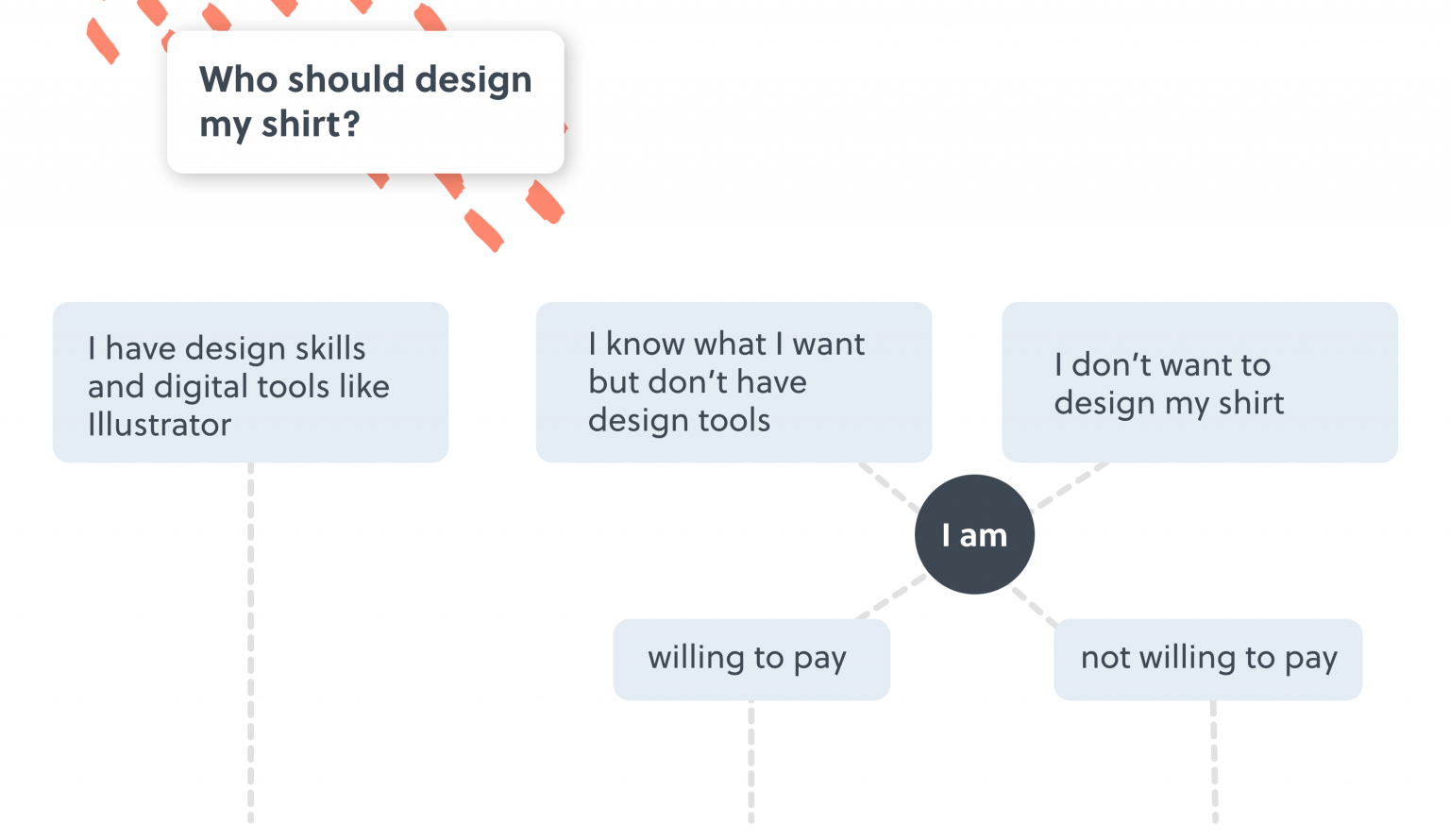
Via bonfire.com
You don't need to be a Picasso to create a fantastic design mockup. Remember, it's your t-shirt. It can look however you want it to!
You've got your goal and you've created your t-shirt mockup using the colors, graphics, and fonts that you decided on. Now what?
It's time to think about printing!
There are all kinds of different methods you can use to print your t-shirt. Each method has different benefits based on the purpose you have in mind, so make sure you keep thinking about what you want to accomplish with your t-shirt.
Screen printing uses a screen or mesh to print a design onto a t-shirt with ink. It's best for large orders where all t-shirts have the same design, and also works best with designs that are simple and basic. So, this type of printing would be good for promotion t-shirts.
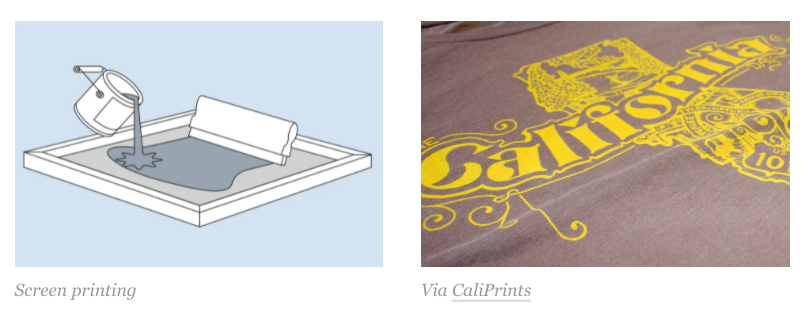
You can also use dye sublimation to print your t-shirts. This method uses heat to implant the design directly into the material. Dye-sublimation is best if you have a more complicated design, and it works best on polyester.
Direct to garment (DTG) printing works in a similar way to a paper printer, where the ink sinks into the fabric. This method is better for smaller orders of cotton shirts. It's also good for more complex designs.
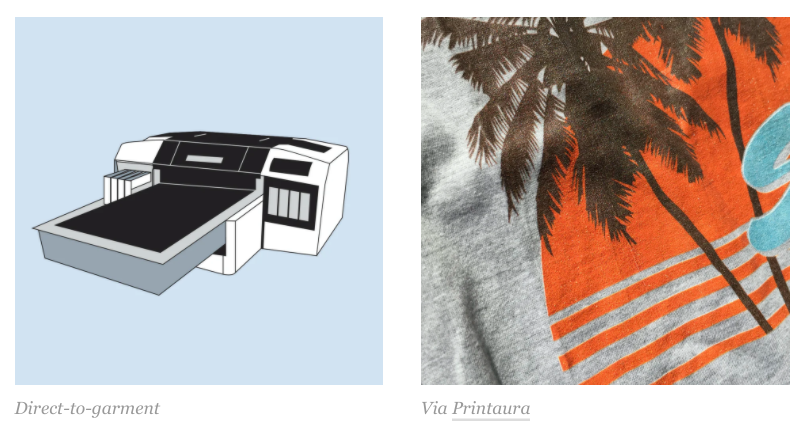
Heat transfer printing is similar to sublimation, but it also works for non-polyester shirts. It uses heat transfer paper to press the design into the shirt. After this is done, the paper is peeled away to reveal the design.
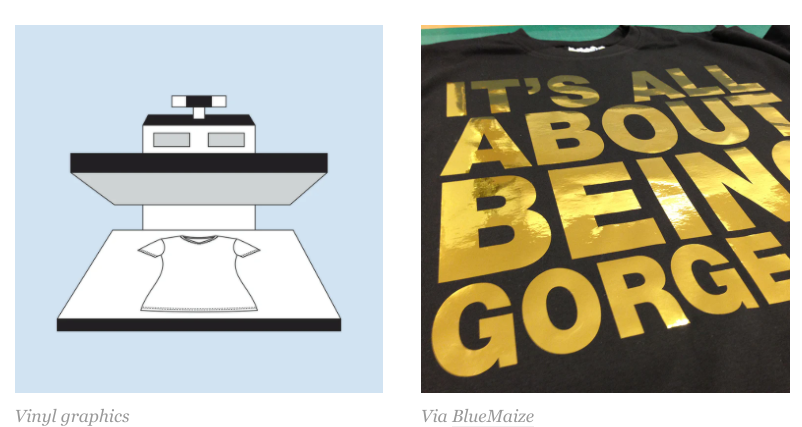
The final printing method, CAD cut vinyl, actually doesn't use ink. Instead, it heat-presses cut vinyl in the shape of the design into the shirt. This method is best for small and simple designs, like logos or sports jerseys.
Take some time to think about what your t-shirt is going to look like and what you want to achieve with it. The way your design looks and the fonts and colors that you've chosen will factor into how they should be printed. Considering these factors will help you decide on your printing method.
You're almost there! The final step you need to take before getting your custom t-shirt into your hands is your material and brand selection. There are lots of t-shirt fabrics that will work, but make sure you take all the other factors into account when choosing one.
Cotton is one of the most common t-shirt materials because it's so soft and comfortable to wear. It's also cheap and works great for printing, which makes it an excellent choice for your t-shirt fabric. You can choose from lots of different subcategories of cotton for your t-shirt.
Polyester is also a very common material. It's extremely durable, able to withstand stretching or shrinking, and dries very quickly, meaning that it's a great material for athletes. It also tends to be cheap and works well for printing.
If you can't decide between cotton and polyester, you can go with a fabric blend! Blends combine the best aspects of both cotton and polyester, and they sometimes include other fabrics as well, like rayon.
There are lots of factors that go into choosing the right fabric for your t-shirt. Pay attention to the size and shape of your design and your preferred printing method. The fabric can also affect the overall style of the t-shirt, so make sure you choose a fabric that works for your goal.
And there you have it! Now that you've created a design and settled on your fabrics and printing method, you're ready to get started.
Creating a custom t-shirt design has tons of benefits. If you're looking to make yourself stand out from the crowd, don't hesitate.
Choose a blank t-shirt from our many options to design a t-shirt of your very own today!